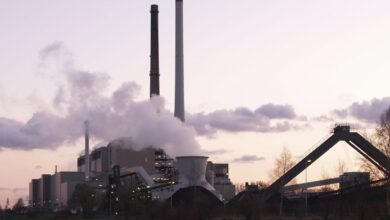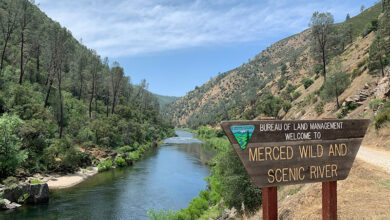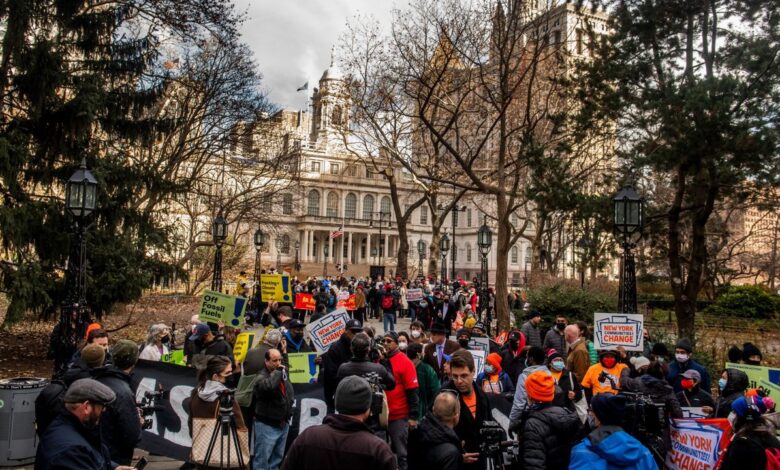
NYC Climate Change Education A Comprehensive Guide
NYC climate change education is crucial for preparing future generations to address the challenges ahead. This guide explores existing initiatives, identifies knowledge gaps, and proposes effective strategies for a comprehensive program, highlighting resources and tools available to educators and students. The ultimate goal is to equip New Yorkers with the knowledge and skills to tackle climate change effectively.
From curriculum-based learning to community-led initiatives, this exploration delves into diverse approaches to climate change education in NYC. We’ll analyze the strengths and weaknesses of each method, considering the needs of different demographics and learning styles. Furthermore, we’ll examine potential barriers to effective education and suggest innovative solutions to overcome them.
Overview of NYC Climate Change Education
NYC’s climate change education initiatives are diverse and evolving, reflecting the city’s commitment to preparing future generations for the challenges and opportunities of a changing climate. These efforts range from formal curriculum integration to community-based workshops, emphasizing both knowledge acquisition and action-oriented learning. The city recognizes that education plays a crucial role in fostering climate literacy and empowering individuals to address the impacts of climate change.Various approaches are employed to engage diverse populations.
Curriculum-based programs integrate climate change themes into existing educational frameworks, while community-led initiatives address local concerns and empower residents to participate in solutions. Experiential learning opportunities provide hands-on experiences, fostering a deeper understanding of climate science and its implications.
Existing Climate Change Education Initiatives in NYC
NYC’s climate change education initiatives aim to provide comprehensive understanding of the issue. These efforts span diverse educational levels and formats, reflecting a multi-pronged approach. Public schools often incorporate climate change topics into existing science and social studies curricula. Community organizations and non-profits deliver workshops and programs tailored to specific neighborhoods and demographic groups. These programs emphasize practical solutions and actionable steps that individuals can take to mitigate their environmental impact.
The city also supports experiential learning through field trips and partnerships with local environmental organizations.
Comparison of Education Approaches
| Method | Strengths | Weaknesses | Target Audience |
|---|---|---|---|
| Curriculum-based | Integration into existing educational structure, broad reach, standardized learning outcomes, and alignment with established educational standards. Consistent exposure across different student demographics. | May not always cater to specific community needs, potential for superficial coverage if not integrated effectively, and may not always include hands-on or experiential learning opportunities. Limited time allocated for in-depth study. | K-12 students, aligning with existing school structures and schedules. |
| Community-led | Tailored to local concerns and needs, fostering a sense of community ownership, and building strong local partnerships. Provides immediate action and application of learned knowledge. | Potential for limited reach beyond the immediate community, inconsistent quality of instruction across various programs, and difficulty in scaling up effectively. May lack resources for consistent program implementation. | Residents of specific neighborhoods, community groups, and adults seeking supplemental learning. |
| Experiential | Hands-on learning, fostering deeper engagement and understanding through direct interaction with the environment, and creating memorable experiences. Builds practical skills and problem-solving abilities. | Limited reach, often requiring specialized facilities or field trips, and may not be accessible to all communities due to cost or logistical constraints. | Students and community members seeking interactive learning opportunities and hands-on projects. |
Strengths and Weaknesses of Different Approaches
This table highlights the various strengths and weaknesses of different climate change education methods in NYC. The curriculum-based approach provides broad reach and standardized learning, but it may lack tailoring to specific community needs. Community-led initiatives, on the other hand, can be very effective in addressing local concerns but may face scaling challenges. Experiential learning provides a unique opportunity for hands-on engagement, but it may not be accessible to all.
Needs and Gaps in NYC Climate Change Education
NYC’s commitment to a sustainable future necessitates robust climate change education. However, current programs may not adequately address the diverse needs and learning styles of the city’s population. This creates gaps in understanding and engagement, potentially hindering the city’s ability to effectively respond to the challenges posed by climate change. Addressing these needs is crucial for empowering New Yorkers with the knowledge and skills to navigate the evolving climate landscape.The city’s diverse demographics, including varying socioeconomic backgrounds, cultural norms, and language proficiency, present unique challenges in tailoring educational initiatives.
Furthermore, different learning styles and accessibility needs must be considered. Recognizing and addressing these gaps is critical to ensuring equitable access to climate change education and fostering a more informed and engaged citizenry.
Knowledge Gaps Among Different Demographics
NYC’s population encompasses a wide array of backgrounds, each with potentially different levels of exposure to and understanding of climate change. Differences in access to information, educational resources, and prior knowledge can create knowledge gaps. For example, residents with limited English proficiency might face barriers to accessing information presented primarily in English. Similarly, communities with lower socioeconomic status may have fewer opportunities for participating in climate change education programs due to resource constraints.
These disparities highlight the importance of culturally sensitive and linguistically accessible educational materials.
Tailoring Education to Diverse Learning Styles and Needs
Effective climate change education must consider the diverse learning styles of the city’s population. Some learners may respond better to visual aids, while others may benefit from interactive workshops or hands-on experiences. Understanding these differences allows for the development of educational materials and activities that cater to a wider range of learning preferences. For instance, integrating multimedia resources, such as videos and interactive simulations, alongside traditional lectures can enhance engagement and comprehension.
Furthermore, ensuring accessibility for learners with disabilities is paramount to fostering inclusivity. Providing alternative formats, such as transcripts, captioning, and sign language interpretation, is vital to ensure that all residents can benefit from the education.
Barriers to Effective Climate Change Education in NYC
Several obstacles can hinder the effectiveness of climate change education in NYC. Limited resources, such as funding and qualified educators, can restrict the scope and quality of programs. Time constraints, particularly for busy professionals or parents, can pose a challenge in participation. Moreover, the complexity of climate science can make it difficult to present the information in a way that is easily understood by diverse audiences.
NYC’s climate change education initiatives are really important, especially for younger generations. It’s inspiring to see the city focusing on this crucial issue. Recently, the news about Chris Young’s charges being dropped here highlights the complex legal and social issues often intertwined with environmental concerns. Still, the city’s commitment to educating its residents about climate change remains a top priority, crucial for a sustainable future.
For example, presenting climate data in an accessible and non-technical manner can make the information more engaging for a wider audience. Addressing these barriers requires innovative solutions, such as leveraging technology to provide online learning resources and partnering with community organizations to reach underserved populations.
Effective Strategies for NYC Climate Change Education
NYC’s diverse population and unique environmental challenges necessitate a comprehensive climate change education program. This program must move beyond basic awareness and foster actionable knowledge and skills for tackling the issue. Effective strategies must be tailored to various community needs and preferences, equipping residents with the tools to participate in sustainable solutions.NYC’s climate crisis is a pressing concern, impacting everything from rising sea levels to extreme weather events.
Education is crucial to empower residents with the knowledge and tools needed to adapt to these changes and mitigate their impact. This framework aims to build a resilient and sustainable future for the city.
A Framework for a Comprehensive Climate Change Education Program
This framework prioritizes a multi-faceted approach, encompassing diverse learning styles and community needs. It includes age-appropriate curriculum for all educational levels, from preschool to higher education, and provides opportunities for continuous learning throughout adulthood. The curriculum will incorporate real-world examples and local case studies to demonstrate the tangible impact of climate change on NYC.
The Role of Technology in Enhancing Climate Change Education
Interactive simulations, virtual field trips, and online resources can significantly enhance the learning experience. These tools can bring complex scientific concepts to life, making them more accessible and engaging for learners of all ages. For example, virtual reality experiences can transport students to flooded coastal areas, allowing them to experience the effects of rising sea levels firsthand. Online platforms can provide access to a wealth of resources, including videos, articles, and interactive maps.
NYC’s climate change education programs are crucial, especially with the recent election results in New Hampshire’s Democratic primary. Understanding the shifts in voter preference, as shown in results new hampshire democratic primary , can help us tailor educational materials to reflect current concerns and priorities. This, in turn, strengthens the impact of NYC’s efforts to teach about climate change.
Interactive games and simulations can make climate change education more enjoyable and engaging, making it a more powerful learning tool.
Different Approaches to Engage Diverse Communities in NYC
NYC’s diverse communities possess unique needs and perspectives. A successful program must recognize these differences and tailor educational materials and strategies to resonate with each group. This might include offering workshops in different languages, organizing community events in culturally relevant spaces, and providing translation services. For example, collaborating with community centers and faith-based organizations to offer culturally sensitive workshops can increase engagement.
By involving local leaders and community representatives in the design and implementation of the program, a more effective approach can be ensured.
Examples of Successful Community-Based Climate Change Education Programs in Other Cities
Many cities have implemented successful community-based programs to raise awareness about climate change. For example, the “Green Schools” program in Seattle focuses on integrating climate change education into the school curriculum, providing students with hands-on experiences and opportunities to contribute to sustainability initiatives. Similarly, San Francisco’s “Climate Action Ambassadors” program engages youth in local climate action projects. These programs demonstrate that community involvement is crucial for effective climate change education.
Recommendations for Improving Teacher Training on Climate Change Education
Effective teacher training is essential to integrating climate change education into existing curricula. This should include providing teachers with professional development opportunities, resources, and tools to effectively teach these concepts. Teachers should be equipped with the knowledge and skills to incorporate climate change themes into existing subjects, such as science, social studies, and language arts. Workshops and training sessions can focus on practical strategies, lesson plans, and real-world case studies related to climate change in NYC.
Providing ongoing support and resources for teachers can ensure long-term sustainability and effectiveness.
Resources and Tools for NYC Climate Change Education
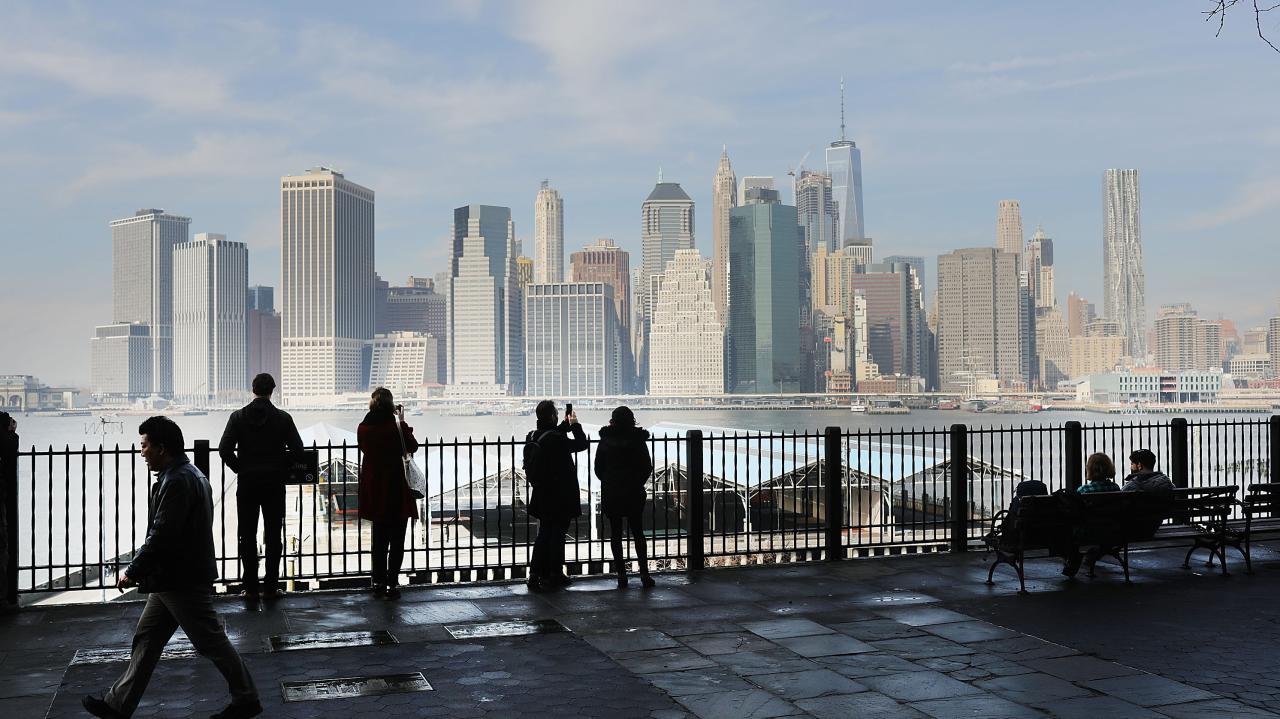
NYC’s commitment to addressing climate change necessitates robust educational resources for all ages. This section highlights existing platforms, tools, and organizations supporting climate change education in the city, ensuring diverse learning experiences for students and educators. A well-equipped educational landscape fosters critical thinking and empowers individuals to become active participants in creating a sustainable future.
Existing Resources for Educators and Students in NYC
NYC boasts a wealth of existing resources dedicated to climate change education. These resources cater to various learning styles and age groups, providing educators with tools to effectively integrate climate change into curricula. This includes access to lesson plans, workshops, and interactive activities. This availability allows educators to easily incorporate climate change into their teaching, fostering student engagement and understanding.
Online Platforms and Tools for Learning About Climate Change
Numerous online platforms offer interactive learning experiences on climate change. These platforms include educational websites, videos, and simulations, making learning accessible and engaging for students and educators alike. Examples include NASA’s climate change resources, interactive maps illustrating climate impacts, and online courses focusing on sustainability. This wide range of online resources allows for diverse learning styles and accessibility, empowering individuals to explore climate change at their own pace.
Examples of Successful Educational Materials for Different Age Groups
Several successful educational materials exist for various age groups, making complex information accessible and engaging. For younger students, age-appropriate picture books and animated videos illustrate the importance of environmental conservation. Middle school and high school students benefit from interactive simulations, data visualizations, and case studies of climate change impacts. These materials are designed to bridge the gap between complex scientific concepts and practical application.
Organizations Supporting Climate Change Education in NYC, Nyc climate change education
Several organizations actively support climate change education in NYC. These organizations offer workshops, programs, and resources for educators and students. Examples include local environmental groups, educational institutions, and non-profit organizations focused on sustainability. This support network provides educators with access to expertise, supplementary materials, and community involvement opportunities.
Categorized Table of Resources
| Category | Resource | Description | Target Audience |
|---|---|---|---|
| Educational Websites | NYC Department of Environmental Protection | Provides information on NYC’s environmental programs and initiatives, including climate change. | Educators, students, and the general public. |
| Interactive Tools | Climate Central | Offers interactive maps and visualizations demonstrating climate change impacts. | Educators, students, and the general public. |
| Organizations | The Nature Conservancy | Provides educational programs and resources focused on environmental conservation and climate change. | Educators and students. |
| Lesson Plans | The New York State Education Department | Offers lesson plans that integrate climate change topics into various subjects. | Educators. |
| Books/Videos | “Chasing Coral” (documentary) | Illustrates the impacts of climate change on coral reefs, accessible to various ages with varying degrees of complexity. | Students, educators, and the general public. |
Future of NYC Climate Change Education
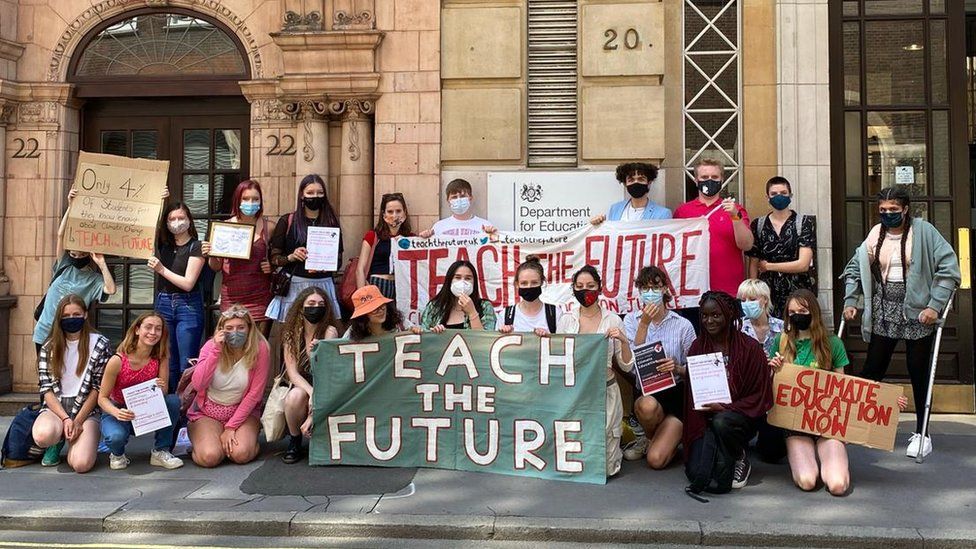
The future of climate change education in NYC hinges on a dynamic interplay of evolving societal needs, technological advancements, and pedagogical innovation. Adapting to the escalating urgency of climate change necessitates a forward-thinking approach to education, equipping students with the knowledge and skills to become active participants in shaping a sustainable future. This requires a proactive and comprehensive strategy that goes beyond traditional classroom lectures.NYC’s unique position as a global hub for innovation and a melting pot of cultures presents both opportunities and challenges.
The city can leverage its resources to create cutting-edge programs that resonate with diverse student populations and address local climate concerns. However, maintaining the quality and relevance of these programs will require ongoing evaluation and adaptation.
Potential Trends in Climate Change Education
Climate change education in NYC is likely to increasingly integrate real-world applications and experiential learning. This will involve more field trips, community engagement projects, and partnerships with local businesses and organizations. Interactive simulations and virtual reality technologies will also play a significant role in providing immersive learning experiences. Furthermore, there’s a strong possibility of a greater focus on climate justice and equity, recognizing the disproportionate impacts of climate change on vulnerable communities.
NYC’s climate change education initiatives are crucial, but the recent Biden veto of the Republican electric vehicle charging plan ( biden veto republican electric vehicle charging ) highlights a bigger picture. While that political battle rages on, local programs focused on sustainable practices and clean energy are even more important for educating the public and driving change. Ultimately, effective climate change education in NYC needs to address both the political landscape and the everyday actions we can take.
Future Needs and Challenges
The increasing complexity of climate change science and its interconnectedness with other societal issues will necessitate a multidisciplinary approach to education. Teachers will need specialized training and resources to effectively integrate climate change concepts into various subjects, from math and science to social studies and the arts. Funding for climate change education programs will remain a critical challenge, requiring sustained support from policymakers and community organizations.
Addressing the diverse learning styles and needs of students from various backgrounds and socioeconomic levels is another important consideration. Furthermore, ensuring the availability of relevant and up-to-date resources will be crucial.
Importance of Continuous Improvement and Adaptation
Continuous improvement and adaptation are essential for the long-term sustainability of climate change education programs. This involves regularly evaluating program effectiveness, gathering feedback from students and educators, and adapting curriculum and methodologies to reflect the latest scientific research and societal developments. Furthermore, ongoing professional development opportunities for educators are crucial to equip them with the knowledge and skills needed to effectively teach climate change concepts.
This proactive approach ensures the programs remain relevant and engaging for students.
Innovative Approaches to Engage Students in Climate Action
Engaging students in climate action is vital to fostering a sense of ownership and responsibility. NYC can explore innovative approaches like creating student-led climate clubs, organizing community cleanup initiatives, developing sustainable school practices, and fostering partnerships with local environmental organizations. These initiatives can provide students with opportunities to apply their knowledge and skills to real-world challenges, empowering them to become agents of change.
NYC’s climate change education programs are crucial, but they often overlook the global context. Think about the implications of events like snow polo in St. Moritz, Switzerland – a sport seemingly disconnected from daily life, but heavily impacted by climate change. Recent reports on snow polo st moritz climate change highlight how warming temperatures are already affecting the sport’s very existence.
Ultimately, understanding these broader impacts is vital to truly grasping the urgency of climate change education in NYC.
Methods to Ensure Long-Term Sustainability
Long-term sustainability of climate change education programs depends on fostering strong partnerships and securing consistent funding. Collaborating with businesses, community organizations, and educational institutions can broaden the reach and impact of these programs. Securing sustained funding through grants, donations, and public-private partnerships is crucial for ensuring program continuity and longevity. Building strong community support and promoting the importance of climate change education to all stakeholders is also critical.
Illustrative Examples
NYC’s climate crisis demands proactive education, equipping future generations with the knowledge and skills to address environmental challenges. This requires innovative programs that go beyond theoretical discussions, fostering practical application and community engagement. Illustrative examples of such programs can inspire similar initiatives across the city.
A Hypothetical Climate Change Education Program for NYC High Schools
This program aims to integrate climate change education into existing high school curricula, making it a vital component of students’ learning experience. The program’s curriculum will incorporate scientific principles, socioeconomic impacts, and practical solutions to foster a holistic understanding of climate change.
- Curriculum Integration: The program will weave climate change themes into existing science, social studies, and even English classes. For instance, a literature unit could explore themes of environmental justice and societal responses to climate change. In math classes, students can analyze data on NYC’s emissions and explore potential mitigation strategies. This interdisciplinary approach allows for a more profound understanding of the issue.
- Hands-on Activities: Students will engage in hands-on activities, such as analyzing local weather patterns, modeling energy consumption in their homes, and designing sustainable urban farming techniques. Field trips to local environmental initiatives, like community gardens or renewable energy facilities, will provide practical exposure to real-world applications.
- Community Engagement Projects: Students will collaborate with local organizations to develop and implement community-based projects to address climate change issues in their neighborhoods. This could involve creating urban gardens, promoting energy efficiency in local buildings, or participating in community cleanups. This approach cultivates a sense of ownership and responsibility among students.
- Evaluation Methods: The program will utilize a diverse set of evaluation methods, including project-based assessments, presentations, and student-led discussions. These methods will not only evaluate factual knowledge but also assess students’ ability to critically analyze information, develop solutions, and communicate effectively about climate change.
Promoting Student Engagement in Environmental Solutions
Engaging students actively in addressing climate change is crucial. The program fosters a sense of ownership, empowering students to become agents of change in their communities.
- Problem-Solving Approach: The program encourages a problem-solving approach, where students identify local climate change challenges and devise innovative solutions. This process helps them understand the multifaceted nature of the issue and develop creative solutions tailored to NYC’s unique context.
- Collaborative Learning: Collaborative learning activities encourage teamwork, communication, and critical thinking. Students learn from each other’s perspectives and develop a collective understanding of the challenges and solutions related to climate change.
- Real-World Impact: The program emphasizes the real-world impact of their actions, allowing students to witness the positive outcomes of their efforts. This tangible connection to the community inspires sustained engagement and a commitment to environmental stewardship.
Real-World Projects for NYC Students
Students can contribute to tangible solutions through projects with tangible results.
- Urban Farming Initiatives: Participating in urban farming projects, like community gardens or rooftop farms, can help reduce the city’s carbon footprint by promoting local food production and reducing transportation emissions. Students can learn about sustainable agriculture, soil health, and food security.
- Waste Reduction and Recycling Programs: Students can design and implement innovative waste reduction and recycling programs in their schools and neighborhoods. This involves promoting proper waste disposal practices, developing educational materials, and working with local waste management authorities.
- Energy Efficiency Audits: Conducting energy audits in local buildings, such as schools or community centers, can help identify areas for energy conservation and reduce energy consumption. Students can gain practical experience in energy efficiency techniques, including insulation upgrades, appliance replacement, and lighting modifications.
Impact of Climate Change on NYC
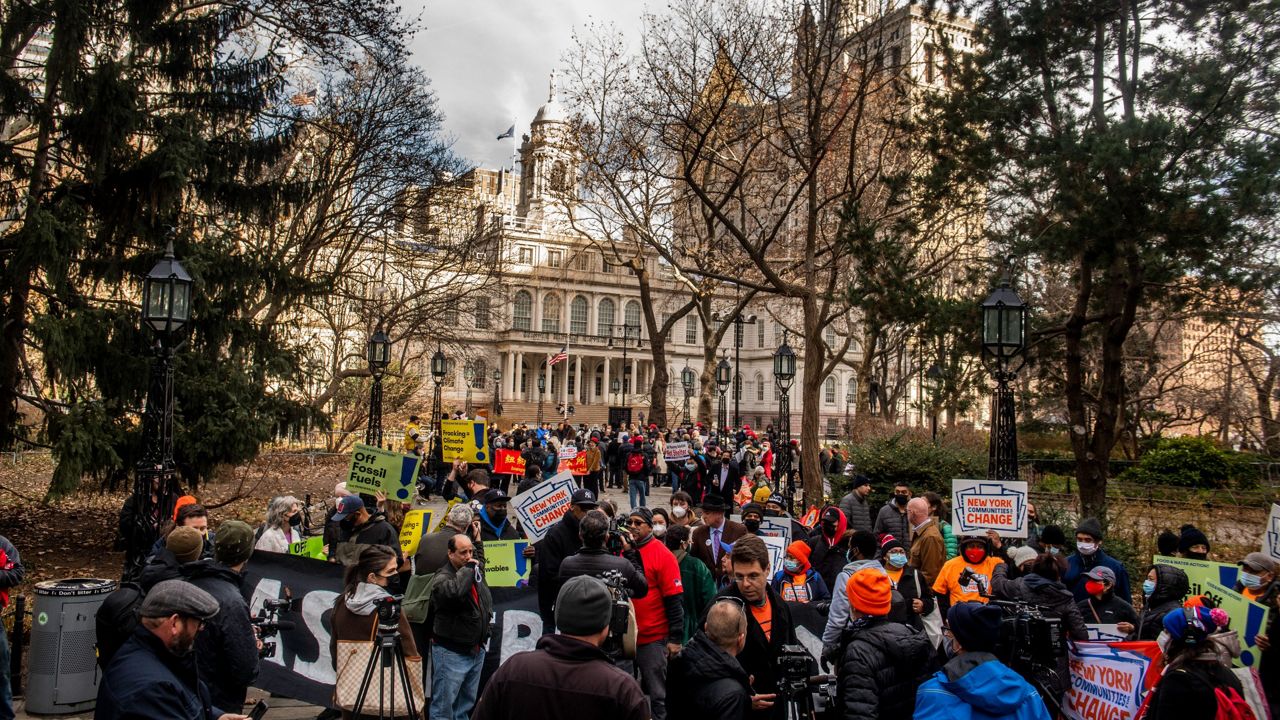
New York City, a global metropolis, is exceptionally vulnerable to the impacts of climate change. Rising sea levels, more frequent and intense storms, and changes in temperature patterns are already affecting the city’s infrastructure, economy, and residents’ daily lives. Understanding these impacts is crucial for developing effective adaptation strategies and mitigating future risks.The projected impacts of climate change on NYC are multifaceted and severe.
From increased flooding to disruptions in vital infrastructure, the consequences are already being felt and will only intensify in the coming decades. This underscores the urgent need for proactive measures to build resilience and ensure a sustainable future for the city.
NYC’s climate change education programs are really important, but sometimes it’s hard to connect the abstract concepts to real-world consequences. Thinking about the resilience and strength of Holocaust survivor portraits, like those by Gillian Laub holocaust survivor portraits gillian laub , can offer a powerful lens for understanding how past traumas and environmental challenges impact communities. Learning from the past is key to creating a more sustainable future for NYC and the world.
Projected Impacts on NYC Infrastructure
The city’s infrastructure, including transportation networks, water systems, and buildings, is highly susceptible to climate change effects. Sea level rise poses a direct threat to coastal areas, increasing the risk of flooding and erosion. More intense storms can damage bridges, tunnels, and other critical infrastructure. Extreme heat events can strain energy grids and exacerbate existing vulnerabilities.
- Coastal Flooding: Rising sea levels, combined with storm surges, will lead to more frequent and severe coastal flooding, impacting low-lying neighborhoods and infrastructure. For example, neighborhoods like Lower Manhattan and Queens are at high risk of flooding during storm surges. Data from the NYC Panel on Climate Change suggests that sea levels are expected to rise by several feet by the end of the century, significantly increasing the frequency and severity of flooding events.
- Extreme Weather Events: Increased frequency and intensity of hurricanes, heavy rainfall, and heat waves will damage infrastructure and disrupt essential services. The 2012 Hurricane Sandy demonstrated the potential for catastrophic damage from extreme weather events. This kind of damage extends beyond the immediate storm, causing long-term economic losses due to repair and recovery.
- Water Supply and Sanitation: Changes in precipitation patterns could impact water availability and increase the risk of waterborne illnesses. Droughts could lead to water shortages, while increased rainfall could overwhelm wastewater systems, leading to contamination. The city’s water supply infrastructure, particularly in vulnerable areas, requires robust adaptation strategies to mitigate these risks.
Impacts on NYC’s Economy
Climate change will have substantial economic consequences for NYC. Damage to infrastructure, disruptions to transportation, and decreased productivity in various sectors will all contribute to financial losses. Increased healthcare costs related to heat-related illnesses and infectious diseases will also add to the burden.
- Tourism and Hospitality: Damage to iconic landmarks and increased risks of flooding could deter tourists, impacting the city’s vital tourism sector. The economic fallout of such disruptions can be significant, affecting numerous businesses reliant on tourism revenue.
- Real Estate: Rising sea levels and increased flooding risks will negatively impact property values and insurance costs in vulnerable areas. The financial implications for property owners and the city’s real estate market are substantial.
- Public Transportation: Flooding and extreme weather events can disrupt subway service and other public transportation networks, affecting commuters and businesses alike. The economic cost of disruptions in transportation networks is substantial, impacting the city’s productivity and efficiency.
Impact on Daily Life
The impacts of climate change will directly affect the everyday lives of NYC residents. Increased heat waves, air quality issues, and disruptions to essential services will have a profound effect on public health and well-being.
- Public Health: Extreme heat events will exacerbate existing health disparities, particularly for vulnerable populations. Increased rates of heat-related illnesses and respiratory problems are expected. The city’s public health infrastructure needs to be prepared to address these emerging health concerns.
- Food Security: Changes in temperature and precipitation patterns can negatively impact agricultural yields, affecting food security and potentially leading to higher food prices. Food insecurity can affect the overall health and well-being of residents.
- Disruptions to Daily Routine: Flooding, power outages, and transportation disruptions can cause significant inconvenience and disruption to daily routines, affecting residents’ work, school, and social activities. These disruptions can be substantial, causing significant stress and economic losses.
Epilogue
In conclusion, NYC climate change education requires a multifaceted approach that integrates existing resources, addresses knowledge gaps, and fosters a culture of environmental stewardship. By understanding the city’s unique needs and challenges, we can develop a sustainable and impactful program that empowers future generations to address the climate crisis effectively. This comprehensive guide provides a framework for achieving this goal, offering concrete strategies and resources for action.
Questions Often Asked
What are some common barriers to effective climate change education in NYC?
Limited resources, lack of teacher training, and competing priorities within the curriculum can hinder the effectiveness of climate change education. Furthermore, engaging diverse communities and tailoring the curriculum to different learning styles can also be challenging.
How can technology enhance climate change education in NYC?
Interactive simulations, virtual field trips, and online resources can make learning about climate change more engaging and accessible. Utilizing technology can also help bridge the gap in access to resources and create a more interactive learning experience.
What are some examples of successful community-based climate change education programs in other cities?
Many cities have implemented successful programs focusing on community engagement and action. These programs often leverage local expertise, build partnerships with community organizations, and emphasize hands-on learning and local solutions.
What specific climate change impacts are projected for NYC in the coming decades?
NYC faces projected impacts such as rising sea levels, increased storm intensity, and more frequent heatwaves. These changes will affect various sectors of the city’s economy and the daily lives of its residents.


